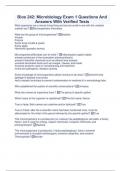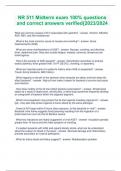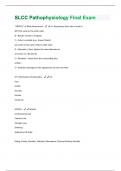Class notes
Emotion and Motivation Lecture notes: Introduction To Psychology Pt2 (PSY1005s)
- Course
- Institution
- Book
This document includes notes, diagrams, and explanations relating to the emotion and motivation section in Intro to Psychology Pt2.
[Show more]













